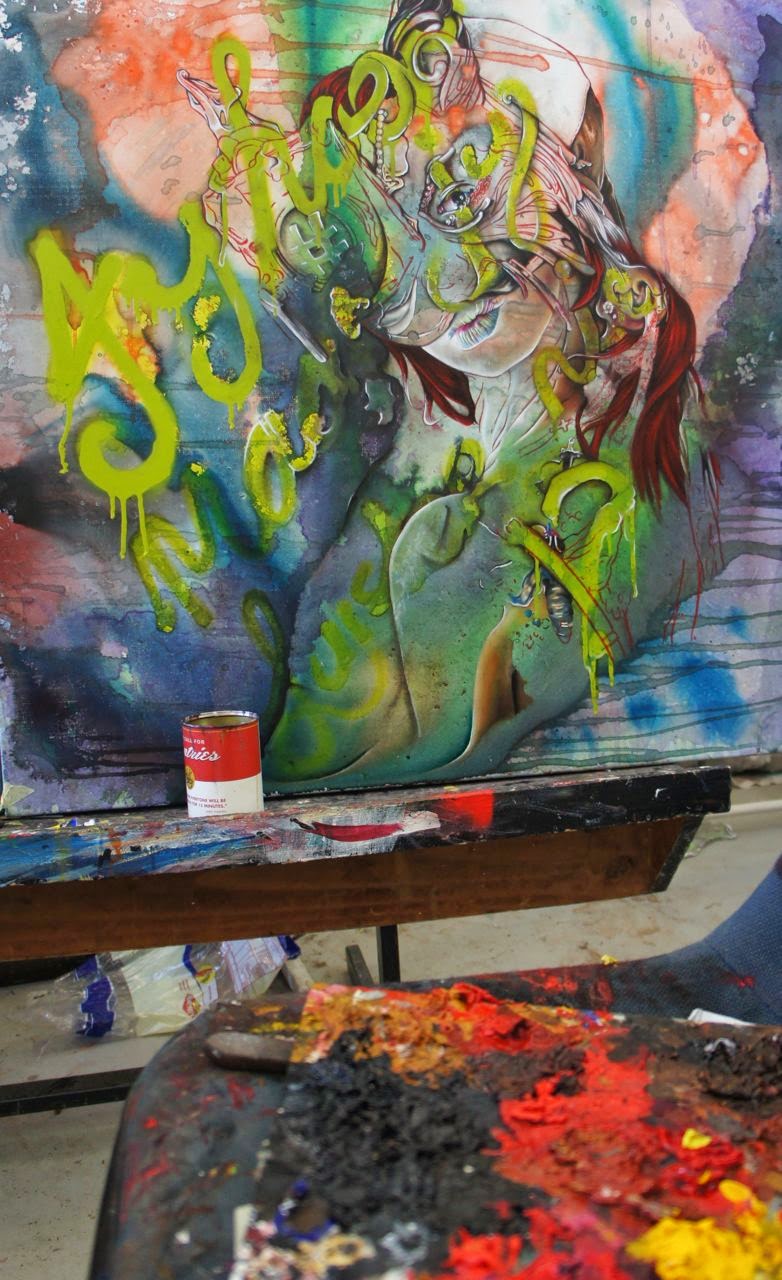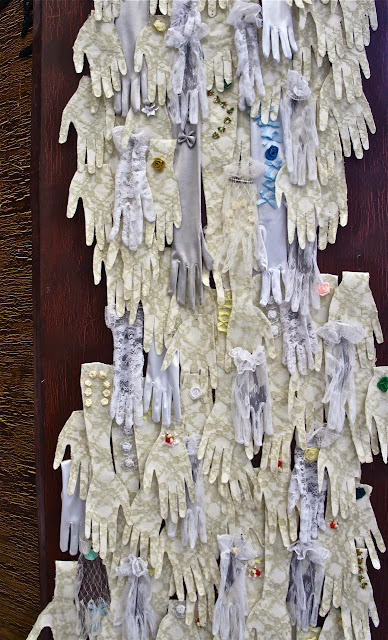 |
| Michael Peterson Studio Shot. |
FADA Gallery
Opening.
Thursday 13 November
Time: 18:00 for
18:30
From: 13-20 November
 |
| Chelsea Rowley studio shot. |
Chelsea Rowley
Ambiguitãs
This body of work deals primarily with the creation of ambiguous imagery. Through the use of a painterly and mainly two-dimensional medium, I have investigated the indeterminate and tentative nature of the ambiguous image. Within this visual portrayal of ambiguity lie certain dichotomous aspects such as corporeality and artificiality, and landscapes and macro imagery.
Ambiguitãs
This body of work deals primarily with the creation of ambiguous imagery. Through the use of a painterly and mainly two-dimensional medium, I have investigated the indeterminate and tentative nature of the ambiguous image. Within this visual portrayal of ambiguity lie certain dichotomous aspects such as corporeality and artificiality, and landscapes and macro imagery.
When
confronted with such ambiguous imagery the viewer is made aware of the act of
observation and spectatorship, and, more importantly, of their role in the
interpretation of the image, as they recognize certain connotations of aspects
and objects and subsequently link them to certain areas of each work.
Michael Petersen
Through this body of work I seek to explore my own identity as a coloured
male in contemporary Johannesburg. Through the notion of claiming space, I seek
to represent the coloured identity as an undefinable, intermediary culture rich
in contradiction.
I do this by drawing a parallel to the mythological entity
known as the trickster, in which I address motifs, values and anecdotes
pertaining to the coloured culture in a manner which is separate from
stereotypical understanding.
Not only does the trickster seek to claim space
within a given environment but also within himself. The collection is focused
around the sub theme of ‘things my mother said’, addressing both nostalgia and
absurdism.
 |
| Michael Petersen studio shot. |
City in Transition
Johannesburg is a city that is losing its ‘self’ because of its multifaceted identity. The original identity of Johannesburg has been ‘camouflaged’ due to the fact that there are so many different cultures existing in one space.
This body of
work investigates the constant shifting spaces of the city of Johannesburg.
Through the constant reiteration of my photographic material of the city and
the over layering process of the ink wash drawings, I attempt to develop the
city of Johannesburg into a camouflage space commenting on its composite
identity.
Zanele Mashinini’s work is primarily about an exploration of a selection of different cultures within the African continent. A distinctive element in her work is cowhide which plays a role of being a signifier of culture and cultural customs and traditions.
She investigates the notion of dowry as well
as her identity and sense of place, focusing mainly on African brides and
African customs. Mashinini is particularly interested in the concept of dowry
because there will be a point in her life where she will settle down and get
married. This exploration of different brides serves as a study which prepares
her for when the time and opportunity for her to become a bride avails
itself. She presents herself in specific
African contexts, mimicking these African brides in different poses so as to
achieve ways in which culture has influenced the women’s representation in each
of the societies in which they belong. Mashinini explores her Swazi culture,
Xhosa culture as well as the influence of the BaSotho culture in her
identity. She therefore hybridises her
identity and sense of self with cultures different from her own.
.
TAMMY BARNES- ARTIST STATEMENT.
My work deals with family history, shame and the trauma
that follows shame. My concept deals with Three Generations of women. I thought
about what makes my grandmother, my mother and I similar; I found the links to
be ordeals and traumatic experiences that each of us experienced at a young
age. I chose to represent this by using memory as a tool and I re-enacted these
memories to create my sculpture. An interview that consisted of 36 questions
was conducted with my grandmother, mother and I. I found similarities in very
specific questions and one thing I’ve learnt because of this interview is that
the secrets amongst family members are abundant and dark, and only once you
know about them do you realize how similar your lives are or have become. It is
almost as if there is an existing pattern (invisible and un-controlling) or
wave that has been passed on from generation to generation.
One of these patterns is that of abuse. I use drawers and doors as a metaphor for secrets. The object becomes the metaphor. You can only see the secret once you open the drawer. The drawer holds secrets and memories, inside each drawer is a story. The same applies for the doors (secrets on top of secrets). The way I was brought up plays a big role in the way I think and the way in which I make art and also the decisions I make on what to display and tell. Therefore I have chosen to reconstruct these memories and share secrets through different aspects by using different objects and have them displayed. I wanted to send messages in these drawers, they act as a “peephole” into my family’s life, a side of my family and I that becomes exposed, and opening each drawer is like invading a personal space. It becomes almost uncomfortable to know to invade a personal space that has been exposed. Your identity is formed the way other people perceive you and in return this is how one perceives one self.
One of these patterns is that of abuse. I use drawers and doors as a metaphor for secrets. The object becomes the metaphor. You can only see the secret once you open the drawer. The drawer holds secrets and memories, inside each drawer is a story. The same applies for the doors (secrets on top of secrets). The way I was brought up plays a big role in the way I think and the way in which I make art and also the decisions I make on what to display and tell. Therefore I have chosen to reconstruct these memories and share secrets through different aspects by using different objects and have them displayed. I wanted to send messages in these drawers, they act as a “peephole” into my family’s life, a side of my family and I that becomes exposed, and opening each drawer is like invading a personal space. It becomes almost uncomfortable to know to invade a personal space that has been exposed. Your identity is formed the way other people perceive you and in return this is how one perceives one self.





























No comments:
Post a Comment
Note: Only a member of this blog may post a comment.